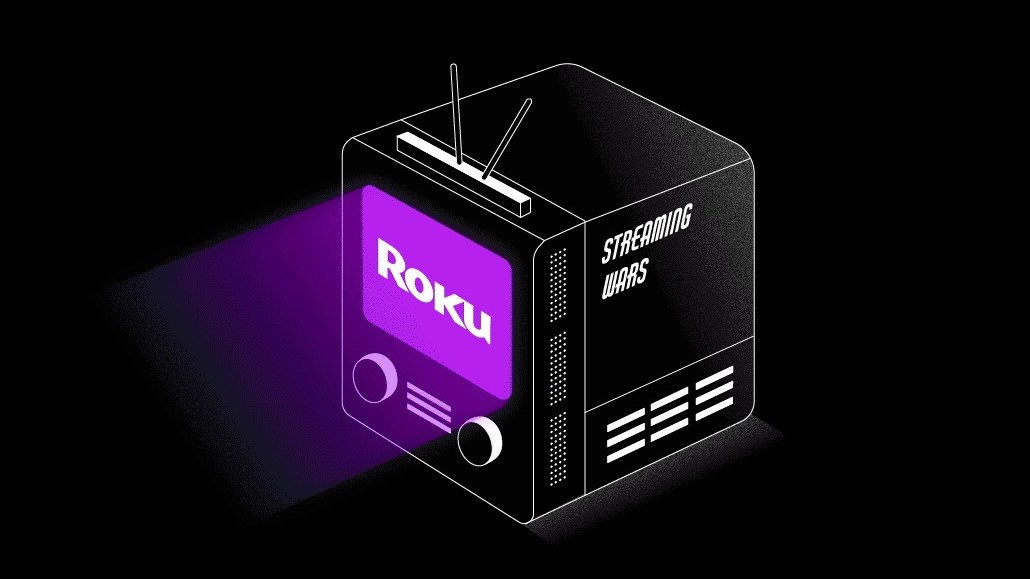With Roku leading the pack, study says 94% of households are reachable through CTV

Connected TV remains on the rise in programmatic advertising, fueled by the popularity of Roku, Samsung and Amazon devices.
In a 2022 report published this month on the global CTV ad supply chain, Pixalate, a fraud and privacy software company, found in the first half of 2022 that 94% of U.S. households are now reachable through open programmatic CTV ads. This is up from 86% in 2021, making for a 10% year-over-year increase and signifying steady growth even as providers and content increase.
The findings of the study align with what media agency buyers are seeing in the marketplace. “We are anticipating growth in ad-supported CTV impressions for obvious reasons: Netflix and Disney+ enter the marketplace in Q4,” said Kelly Metz, managing director of advanced TV at Omnicom Media Group. “From a seasonality perspective, Americans return to their televisions as football season drives overall viewership and weather drives consumers indoors.”
Pixalate’s data analysis was based on programmatic activity across more than 300 million CTV devices and 70,000 programmatic support CTV apps, mostly consisting of buy-side open auction programmatic traffic sources.
Overall, these trends point to some growth in the volume of CTV apps and global ad spend in programmatic CTV, as well as Amazon and Apple catching up in their market share. The report also takes a more in-depth look at each app’s growth in different categories and makes comparisons across operating systems, from Apple tvOS to Samsung’s Tizen OS.
“Covid-19 lockdowns were a catalyst for consumer adoption, as household reach [in CTV ads] has leapt from 59% in Q1 2020 to 94% now,” said Jalal Nasir, CEO of Pixalate.
However, some other areas are growing at a slower rate when compared to the height of the pandemic in 2020 and 2021. On the device manufacturers side, Roku is still leading the market with almost half the share of programmatic ad spending — but other tech giants are quickly catching up.
“Samsung has also shaken up the marketplace, rising from 4% CTV device market share in H1 2020 to 17% in H1 2022,” Nasir said.
Here is a closer look at some of the trends in this CTV supply chain research:
- In Q2 2022, 94% of U.S. households were reachable via open programmatic CTV ads, up from 86% in 2021. This is continued growth since Q4 2020, when 78% of households were reachable through CTV.
- The report noted a four-fold increase in open programmatic CTV ad spend in the last three years, with H1 2022 showing a 31% year-over-year increase in the global spending. But that rate of growth is slowing down from its height in 2020. In H1 2021, the global spending showed a 50% increase, whereas in H1 2020 there was a 105% increase.
- There was some uptick in the volume of CTV apps supporting open programmatic ads in the last few years. So far this year, Pixalate tracked a 20% year-over-year increase in CTV apps, which is more than double the volume since H1 2020. However, this rate was significantly down from the 71% growth reported from H1 2020 to H1 2021.
- Roku devices are still No. 1 in the CTV market, dominating 44% of the share of ad spend. Samsung is in second place, claiming 17% of the market, while Amazon is in third with 12% of the market. Apple isn’t too far behind, capturing 9% of this ad spend market.
- In terms of the ad categories for Roku, movies and TV made up the largest share of programmatic ad spend (75%), gaining 8% in Q2 2022. Education saw the largest increase, up 138% this second quarter, but this category only accounts for 1% of the share of voice for Roku programmatic ad spend.
More in Media

Meta AI rolls out several enhancements across apps and websites with its newest Llama 3
Meta AI, which first debuted in September, also got a number of updates including ways to search for real-time information through integrations with Google and Bing.

Walmart rolls out a self-serve, supplier-driven insights connector
The retail giant paired its insights unit Luminate with Walmart Connect to help suppliers optimize for customer consumption, just in time for the holidays, explained the company’s CRO Seth Dallaire.

Research Briefing: BuzzFeed pivots business to AI media and tech as publishers increase use of AI
In this week’s Digiday+ Research Briefing, we examine BuzzFeed’s plans to pivot the business to an AI-driven tech and media company, how marketers’ use of X and ad spending has dropped dramatically, and how agency executives are fed up with Meta’s ad platform bugs and overcharges, as seen in recent data from Digiday+ Research.





